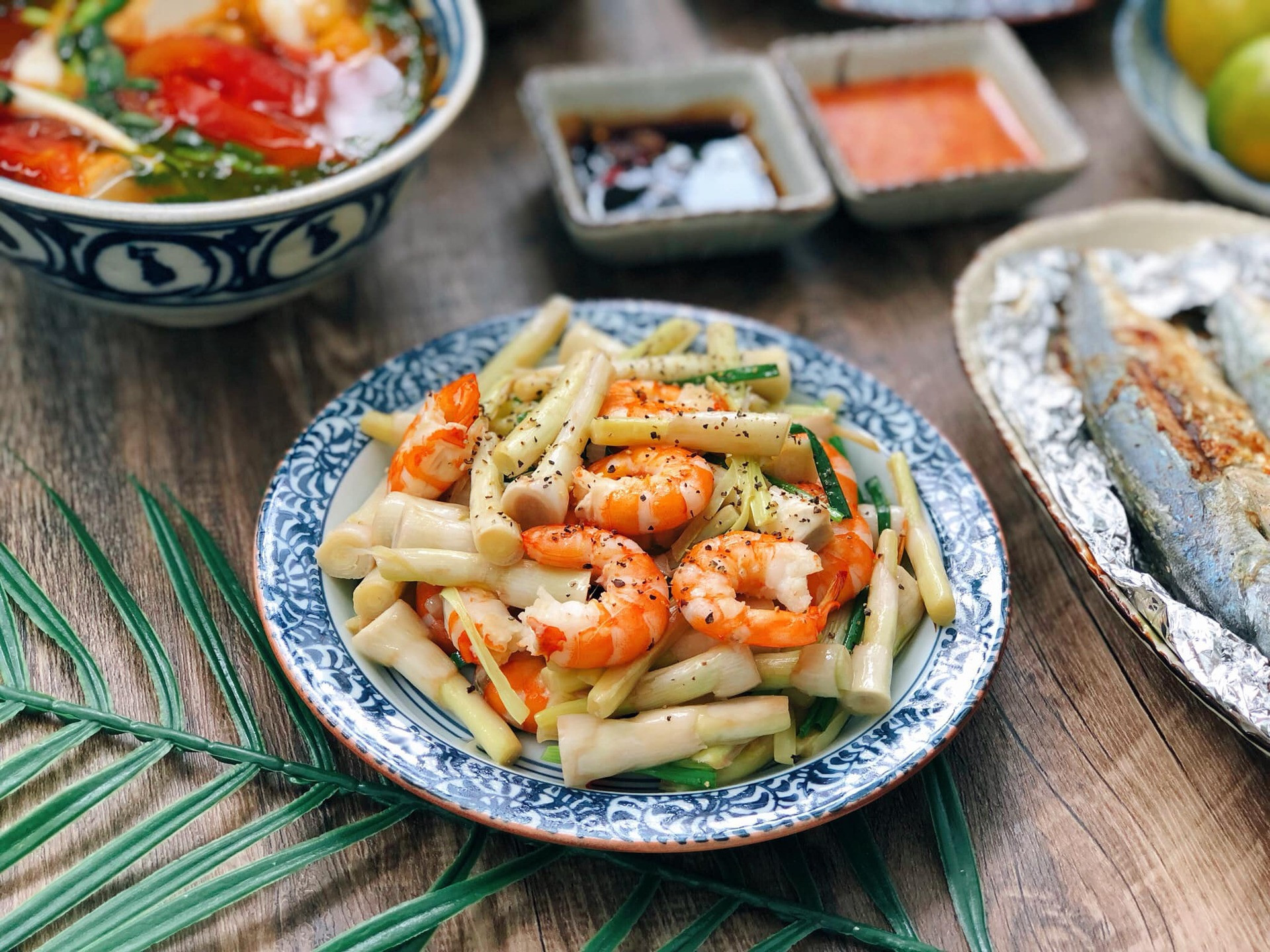
Bon bon thrives in freshwater or brackish lowlands of Ca Mau, Soc Trang, and Bac Lieu. In recent years, this former weed has become a lucrative crop for Mekong Delta farmers.
Bon bon is remarkably resilient, flourishing even in saline or acidic soils. Previously, it was a “thorn in the side” for locals due to its stubborn growth, crowding out other plants. Every June and July, farmers labored to clear bon bon to plant rice.
But things have changed. Recently, many households in U Minh and Cai Nuoc (Ca Mau) have shifted from rice to bon bon cultivation, often combined with fish farming, as it yields higher income without requiring pesticides.
When the rainy season begins, bon bon proliferates. Farmers simply plant it in fields and wait for harvest, requiring minimal care.
From a wild plant, bon bon has become a profitable crop for Ca Mau farmers. At peak prices, it sells to traders for VND20,000-30,000 per kilogram.
Cai Nuoc is Ca Mau’s most renowned bon bon hub. Cai Nuoc and Ca Mau bon bon products have been certified as a collective trademark by the Intellectual Property Office under the Ministry of Science and Technology.
Previously, bon bon was a humble dish for rural poor people. Now, it is a specialty served at restaurants and tourist resorts.
Bon bon can be processed into various dishes like snakehead fish soup, stir-fried with meat or shrimp, made into salads, or pickled to pair with braised fish or meat. This former weed, through skillful preparation, can become an unforgettable dish.
For fresh bon bon, stir-frying with shrimp or small freshwater shrimp is most popular. Bon bon green leaves are removed, tough or old bases are peeled, and the tender parts are washed in diluted saltwater and cut into bite-sized pieces. Depending on preference, cooks may lightly crush it or blanch it briefly.
On a hot pan, chefs seasoned shrimp or small shrimp and stir evenly. When nearly cooked, they turn up the heat, add bon bon, and stir-fry for 1-2 minutes. The simple dish is remarkably delicious.
Pickled bon bon is another specialty enticing tourists. After harvesting, the tender, white stems are washed, split in half, and drained. It is then placed in jars and soaked in rice-washing water.
Using rice water is labor-intensive and costly, but this helps preserve bon bon’s crispness and aroma better than vinegar. After three days, it ferments into pickles, usable for a month if refrigerated.
The products are highly sought after by tourists as souvenirs in Ca Mau. They are also showcased at fairs and sold in supermarkets.
Linh Trang